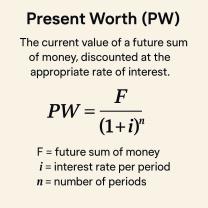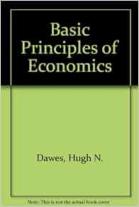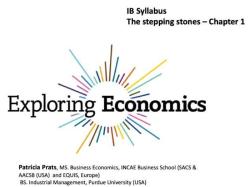What does the marginal cost tell you?
Marginal cost (MC) is a critical economic concept that provides valuable insights into various aspects of production, pricing, and decision-making in economics. Here's what the marginal cost tells you and the economic insights it provides:
Cost of Producing One More Unit: Marginal cost represents the additional cost incurred when producing one more unit of a good or service. It tells you how much more a business or producer has to spend to increase output by one unit.
Optimal Production Level: MC is used to determine the level of production that maximizes profit. In many cases, businesses aim to produce up to the point where marginal cost equals marginal revenue (MC = MR). At this point, the additional revenue from selling one more unit equals the additional cost of producing it. Operating beyond this point would result in lower profits.
Diminishing Returns: MC often rises as production increases, reflecting the principle of diminishing marginal returns. This means that as more units are produced, each additional unit becomes more expensive to produce due to factors like limited resources and capacity constraints.
Resource Allocation: Marginal cost helps businesses allocate resources efficiently. By comparing MC to the selling price or market demand, a firm can determine whether it's cost-effective to expand production, reduce output, or maintain the current level.
Pricing Decisions: In competitive markets, businesses often set prices close to their marginal cost. This is because selling at a price above marginal cost in a competitive market would result in reduced sales, as consumers would switch to cheaper alternatives.
Economies and Diseconomies of Scale: MC can provide insights into economies and diseconomies of scale. When MC is decreasing, it indicates that a firm is experiencing economies of scale, which means that per-unit production costs are decreasing as output increases. Conversely, when MC is increasing, it suggests diseconomies of scale, where per-unit costs are rising with increased production.
Shutdown Point: MC helps determine the shutdown point for a firm. If MC exceeds the market price, a firm may choose to temporarily shut down its production in the short run, as it would incur losses by producing at a price lower than the cost.
Cost Control and Efficiency: Monitoring MC is essential for cost control and efficiency in production. A rising MC can signal inefficiencies or constraints in the production process, prompting a firm to take corrective actions.
Investment and Expansion Decisions: When considering investments in new facilities or expanding production capacity, firms analyze MC to assess the expected return on investment. Lower MC may make expansion more attractive.
Environmental and Social Implications: MC analysis is also relevant in evaluating the environmental and social costs of production. It helps identify the point at which additional production may lead to negative externalities or increased resource depletion.
In summary, marginal cost is a vital tool in economics that aids decision-making by providing insights into production efficiency, pricing strategies, profit maximization, and resource allocation. Understanding MC allows businesses and policymakers to make informed choices that impact profitability, competitiveness, and resource utilization.












